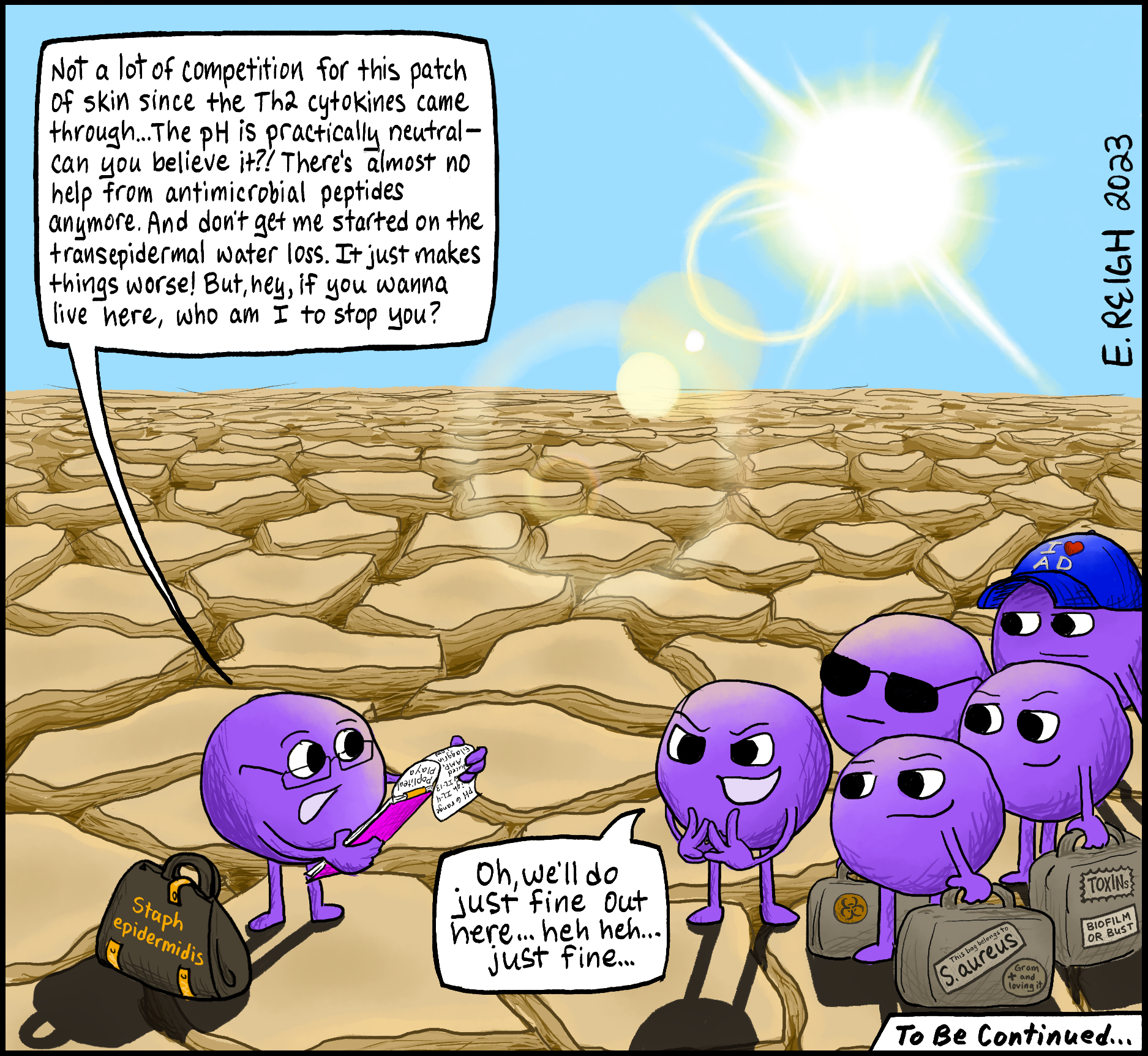JUST THE BASICS
Atopic dermatitis (AD), also known as eczema, is a rash that is common in children with allergies. With AD, the skin becomes inflamed, cracked, red, itchy, and flaky. This cartoon focuses on the role of bacteria in this disease. While our skin normally has “good bacteria” on the surface, which help our skin stay healthy, “bad bacteria” can take over AD skin and make it even more irritated.
TELL ME SOMETHING NERDY
Normally, the skin surface is acidic and colonized by commensal bacteria such as Staphylococcus epidermidis. In AD, skin changes due to chronic inflammation allow Staphylococcus aureus to grow and thrive instead. For example, AD skin has a higher pH level, which S. aureus prefers for growth. AD skin also produces lower levels of antibacterial compounds like cathelicidin that suppress S. aureus. As a result, S. aureus infection is a common complication of atopic dermatitis. S. aureus can also produce toxins that inflame the skin even further.
Treating AD skin requires keeping the skin hydrated, sometimes using steroids to reduce inflammation, and sometimes using antibiotics to control bacteria like S. aureus.
Published in the February 2024 Annals of Allergy, Asthma & Immunology: https://doi.org/10.1016/j.anai.2023.07.008
